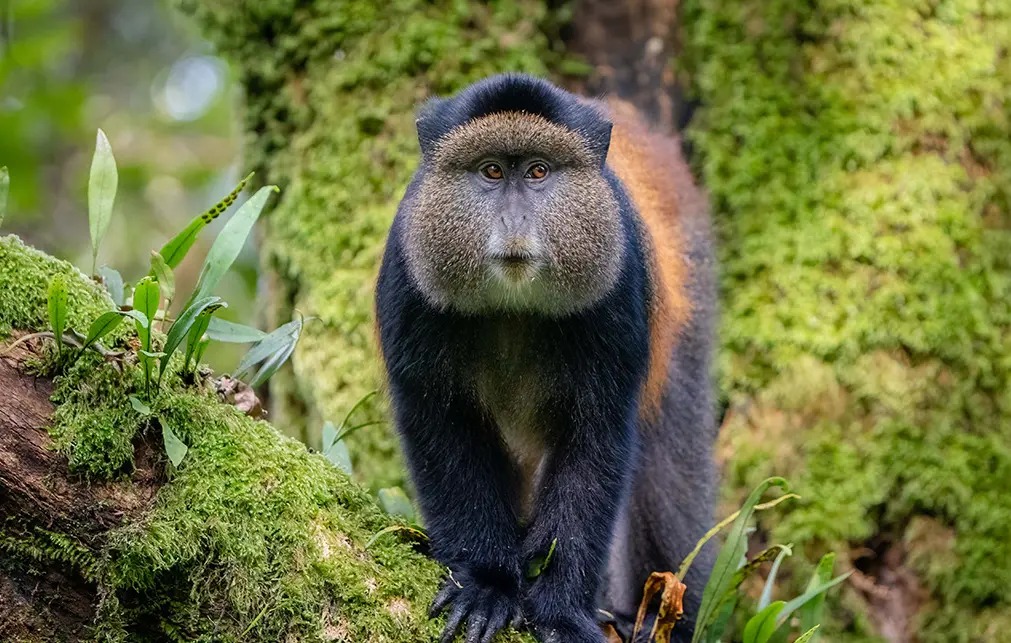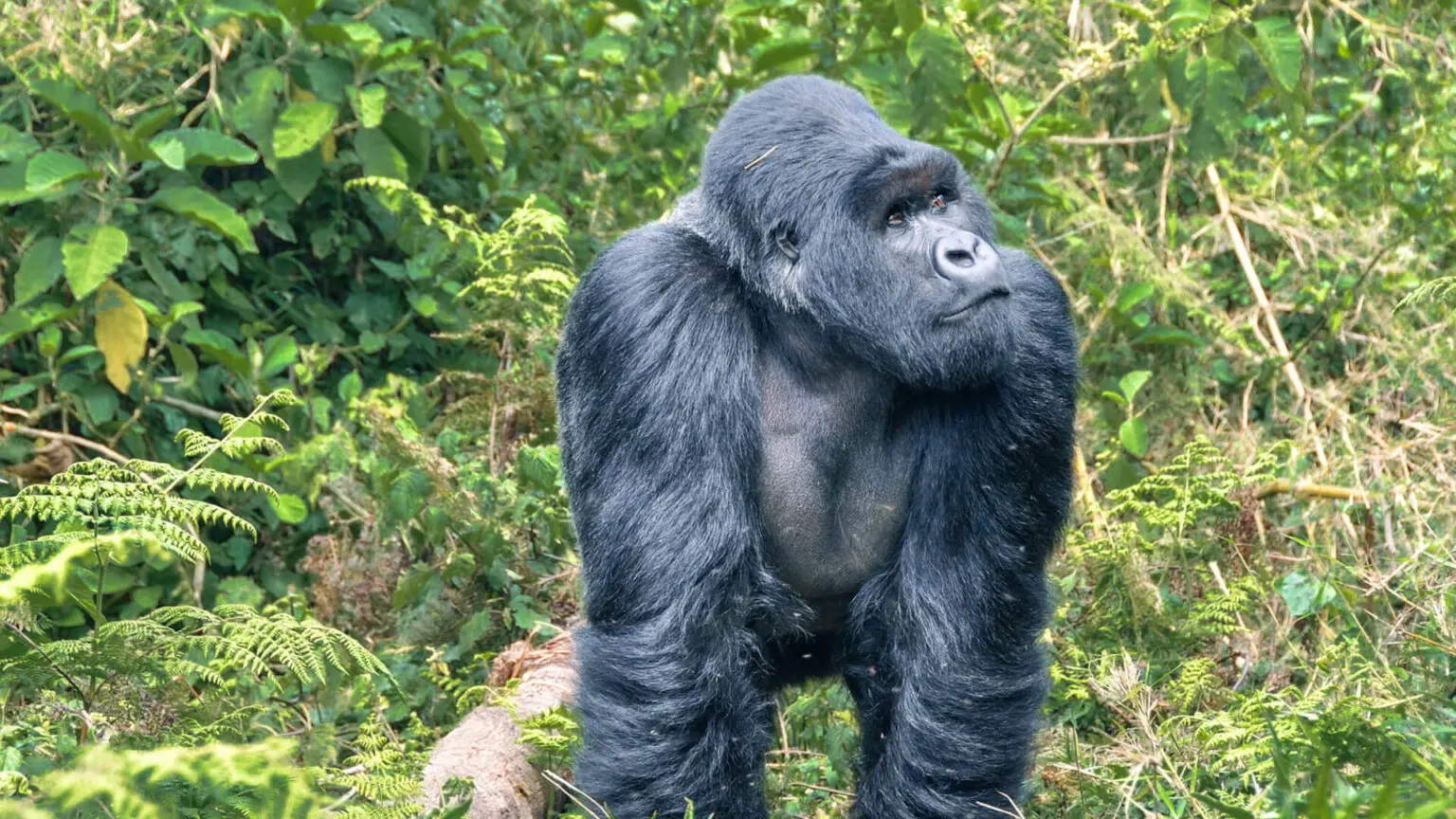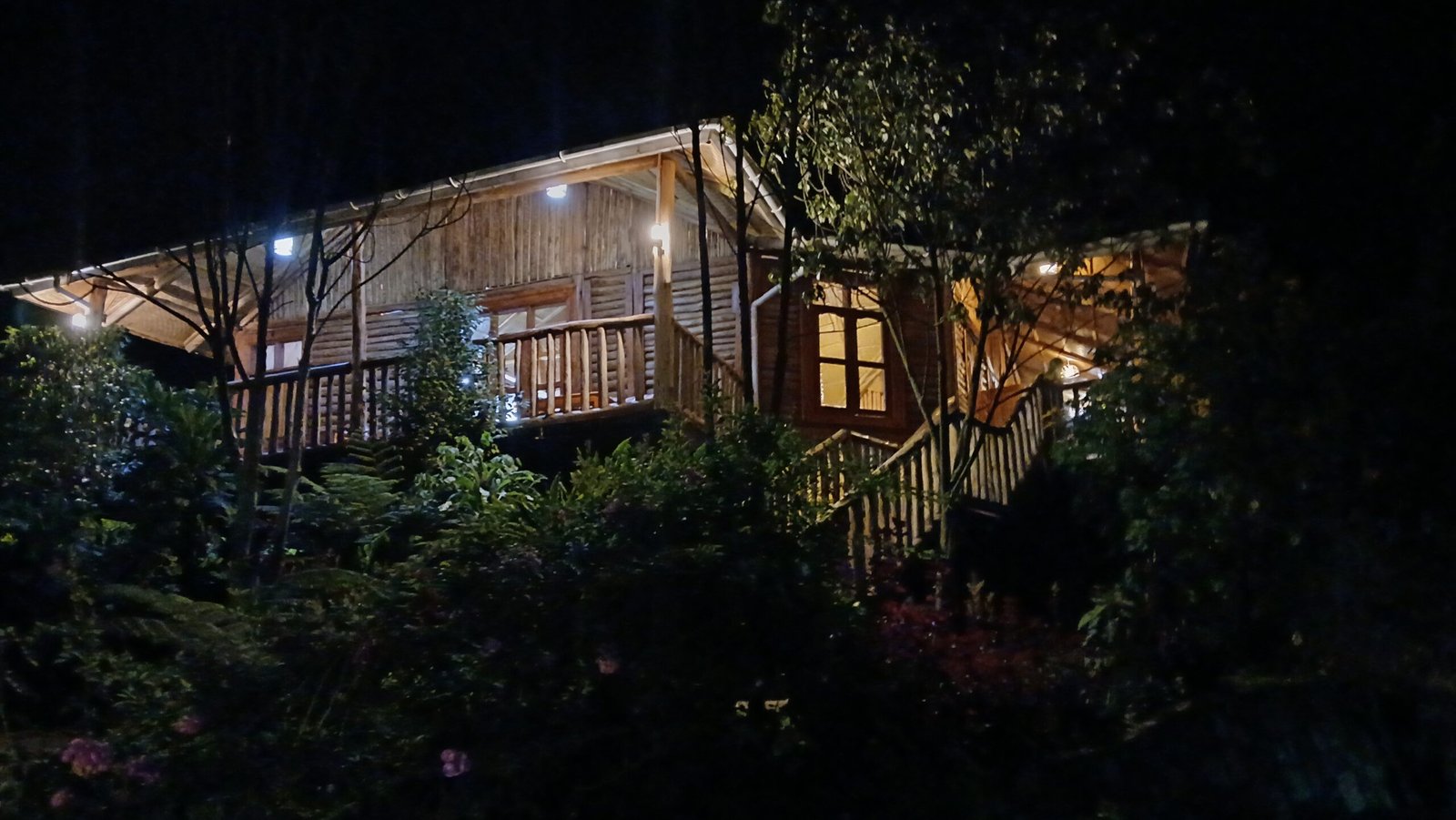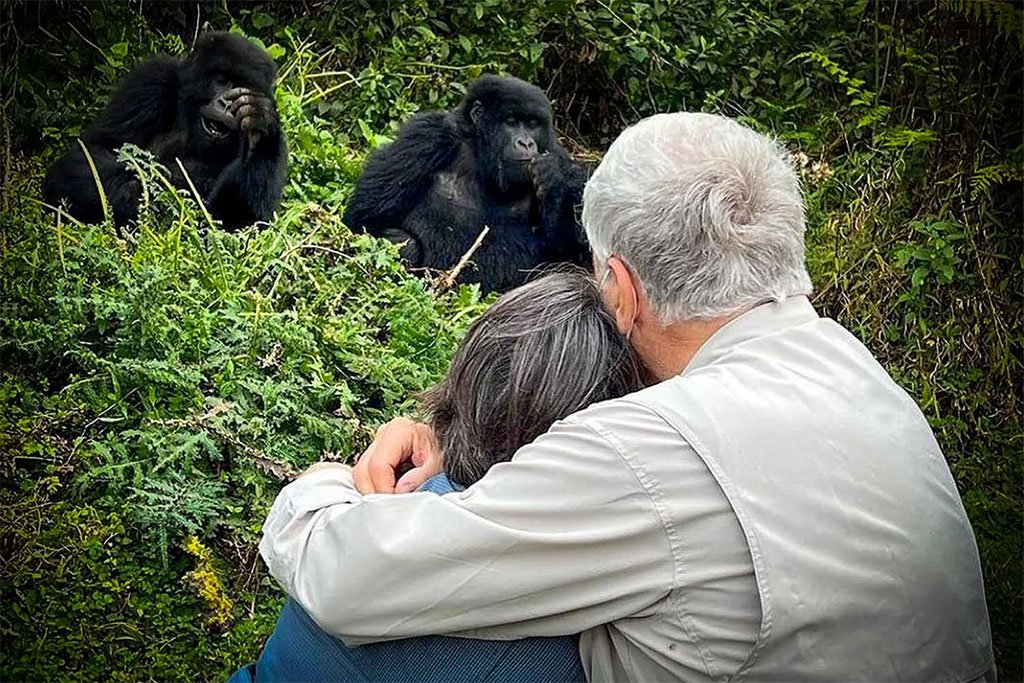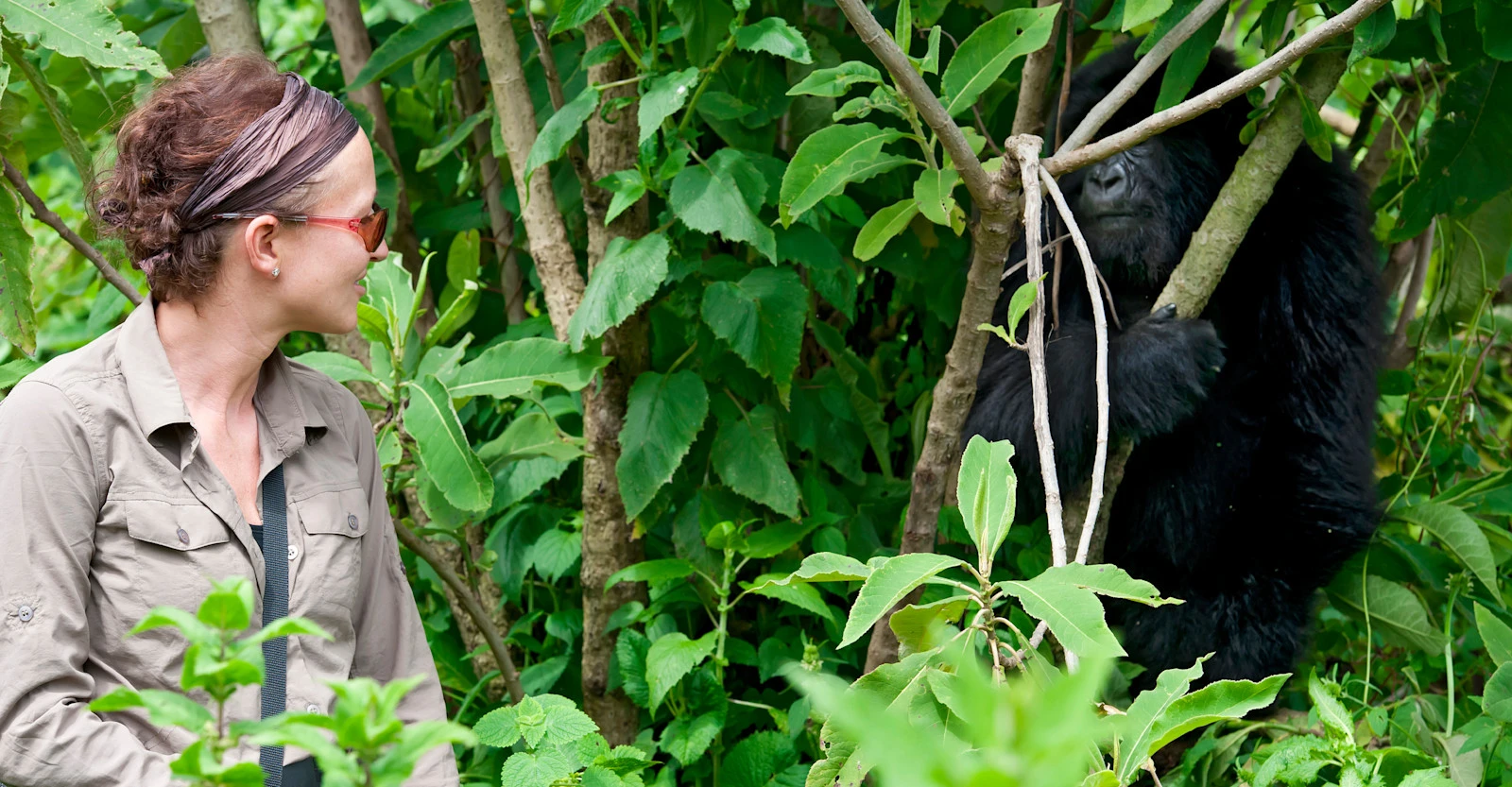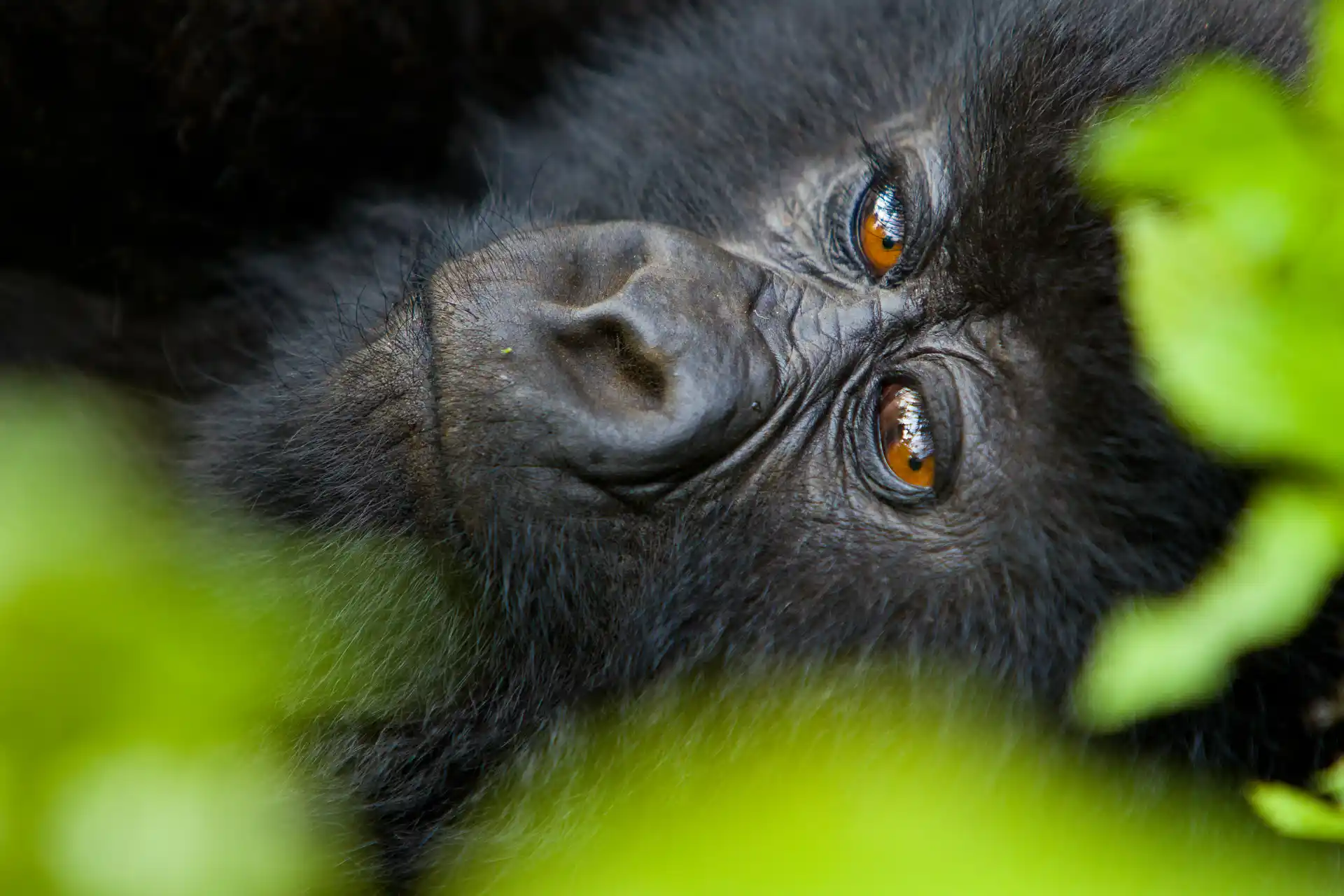Bwindi Impenetrable Forest
Bwindi Impenetrable National Park
Bwindi Impenetrable National Park, located in southwestern Uganda, is a UNESCO Natural World Heritage site. Its name, meaning “a place full of darkness,” comes from its thick, dense forest. Though it’s a relatively small park, covering just 321 km², it is home to nearly half of the world’s mountain gorillas living in the wild. These gorillas are seriously endangered due to poaching, habitat destruction, and diseases.
Besides mountain gorillas, there are a total of 120 mammal species and 350 species of birds. Bwindi Impenetrable Forest is located in the Great Rift Valley and has altitudes ranging from 1,160 to 2,607 meters. About 60% of the park is above 2,000 meters. It’s a tropical rainforest with temperatures that range from 7-15°C at night to 20-27°C during the day. The park gets between 1,400 and 1,900 mm of rainfall each year, with the heaviest rains falling between March and April, and again from September to November.
Bwindi is about an 8–9-hour drive from Entebbe, or you can fly to Kisoro in just an hour from Entebbe. To the north, you’ll find Queen Elizabeth National Park, famous for its tree-climbing lions, and to the south is Mgahinga Gorilla National Park. Bwindi is a must-see stop on a tour of Uganda, where visitors have the incredible chance to get up close with the mountain gorillas. The park has over 20 gorilla families that are open to tourists, spread across four areas: Buhoma, Ruhijja, Rushaga, and Nkuringo, all managed by the Uganda Wildlife Authority.
Safaris To Bwindi Impenetrable Forest
Why go gorilla trekking in Bwindi?
1. Mountain Gorillas in the Wild
Bwindi is home to around 500 mountain gorillas, the largest population anywhere in the world. Trekking through the forest to see these amazing creatures is a one-of-a-kind experience. Gorilla trekking in Bwindi can be relatively difficult, but when you finally see a giant silverback gorilla up close, all the effort is worth it. Being in the presence of a gorilla family—hearing their deep, rumbling sounds and watching them feed—creates a memory that lasts forever.
2. A Sense of Adventure
Trekking through Bwindi Impenetrable Forest a real jungle experience. The trails can be steep and slippery, and you will be winding through thick undergrowth, crossing small streams and waterfalls and climbing rocky slopes. But that’s what makes it so exciting—every step gets you closer to something incredible. Unlike other gorilla trekking spots, Bwindi offers a raw, immersive jungle experience that is harder to navigate but rewarding for those wanting to feel truly at the heart of an ancient ecosystem.
3. Biodiversity Beyond Gorillas
Bwindi Impenetrable National Park is not just about gorillas it is a true biodiversity hotspot. The park is home to over 120 mammal species, 350 bird species, and around 1,000 species of flowering plants, many of which can’t be found anywhere else in the world. As you explore the ancient forest, you will be surrounded by a chorus of sounds, from the calls of colorful turacos to the rustling leaves beneath your feet.
4. Sustainable Tourism Efforts
Gorilla trekking in Bwindi Impenetrable National Park helps protect the forest and its wildlife. Local communities also benefit from tourism, as they are directly involved in the process. The money from gorilla permits goes towards conservation efforts, like anti-poaching patrols and research. So, every step you take in Bwindi Impenetrable Forest helps ensure its future, making your visit even more meaningful.
5. Affordable Permit Prices
Gorilla trekking in Bwindi is well-regulated, but the permits are much cheaper compared to nearby Rwanda, making it a great choice for travelers looking for a more affordable adventure or those wanting to go on multiple treks. The standard permit costs US$800 for non-residents. With a permit, you can spend one hour with a gorilla family after reaching them. The group size is limited to 8 people. Bwindi also offers a unique experience called the gorilla habituation, where you can track two semi-habituated gorilla families. Only four tourists can join this experience each day, and you’ll stay for 4 hours. The cost for this special experience is US$1,500.
6. A Variety of a activities
Aside from gorilla trekking, there are many other activities to enjoy in the Bwindi area, like nature walks and bird watching. You can also visit a Batwa community. The Batwa people were the original inhabitants of the forest but were moved when the national park was created. Another fun activity is a cooking course where you’ll learn about traditional dishes from the Bakiga tribe. You’ll start by picking fresh vegetables and herbs from the garden at Ride 4 a Woman, then cook together with a chef. You’ll learn to make dishes like Matoke (plantains), G-nut sauce, roasted goat meat, and Skumawiki (local spinach). You’ll also try Imonda, a local drink made from sorghum, millet, honey, and water. In the evening, you’ll enjoy the meal you’ve prepared around a campfire with the women and families who taught you. The money from the course helps support the Ride 4 a Woman project.
Lodges in Bwindi Impenetrable National Park
There are many great lodges and camps around Bwindi, some in nearby villages and others right next to the national park. If you book your own place to stay, it’s important to know which part of Bwindi you’ll be trekking from—Buhoma, Ruhija, Rushaga, or Nkuringo. These areas are far apart by road, so it’s best to choose a lodge near the area where you’ll be trekking.
It may sound obvious, but I’ve met many people who end up having to drive to a different trailhead for their trek and then back to their lodge afterward. This can be a bit of a hassle, but it’s manageable if you’re traveling between Buhoma and Ruhija (about two hours), or between Rushaga and Nkuringo (about one hour). However, it’s very difficult if you’re traveling between other areas, like Buhoma and Nkuringo, which are about six hours apart by car.
Orugano Bwindi Lodge
Our lodge, Orugano Bwindi Lodge, is the perfect place to stay if you’re planning to go gorilla trekking in the Nkuringo Sector of Bwindi. It’s close to both the Virunga Volcanoes in Mgahinga Gorilla National Park and the beautiful Lake Mutanda.
The Nkuringo area is home to several gorilla families, including Nkuringo, Bushaho, Christmas, Nkuringo, and Posho. This part of Bwindi is known for being the most scenic, with stunning views of the Virunga volcanoes.
Explore These Bwindi National Park Resources
How to Get to Bwindi Impenetrable National Park
If you’re traveling from Kampala or Entebbe International Airport, the drive to Bwindi takes at least 10 hours without any stops. So, if you’re planning to go directly from Entebbe, it’s a good idea to book a scheduled flight to Kihihi (for Buhoma or Ruhija) or Kisoro (for Rushaga or Nkuringo). Bwindi is actually much closer to Kigali, the capital of Rwanda, so many road tours to the park start from there. You can also visit Bwindi as part of a longer road trip around Uganda.
If you’re coming from Queen Elizabeth National Park, the drive will take anywhere from two to six hours, depending on where you start and which gorilla trekking center you’re visiting. Alternatively, if you’re coming from Lake Mburo National Park, it will take five to seven hours.



